
FOUNDATION FOR THE PRESERVATION OF CHICKERING AND EARLY AMERICAN KEYBOARD INSTRUMENTS
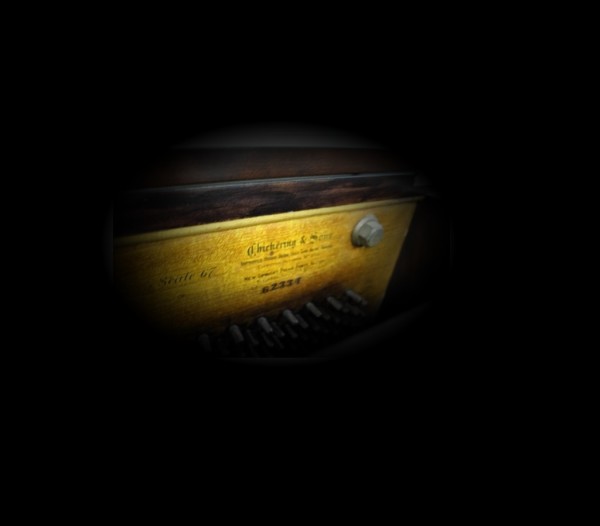
Locating Your Serial Number
In many cases, the serial number will be quite obvious. Knowing where to start looking, however, will certainly ease the process of locating it. Particularly where the serial number is stamped into wood, as the shellac or other finish wears off, so too does the clarity of the indentation (if any indentation remains at all). As a result, the numbers may be hard to decipher: 8’s may look like 3’s and 0’s like 9’s. Take especial care to study the number, as we have seen purported serial numbers that do not correspond to the piano to which they are affixed.
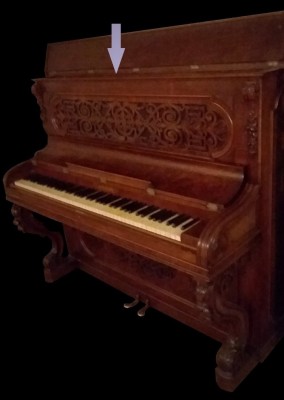
UPRIGHTS
On your upright, the serial number is almost always on the wood or iron frame inside the piano above the tuning pins. This area is accessible by simply lifting up the top lid as shown.
SQUARES
1823 - ~1845
Chickering's placement of serial numbers on its earliest square pianos was not consistent. Where the number is found most often is stamped into the upper surface of the case, to the left of the keyboard. It is often stamped in small numbers and can be hard to find or make out. If the serial number is not in this location, but you find a 3- or 4-digit number elsewhere on the piano, it is likely the serial number. Chickering did not begin applying case numbers until after this period. case number, not the serial number. It cannot be used to date the piano.
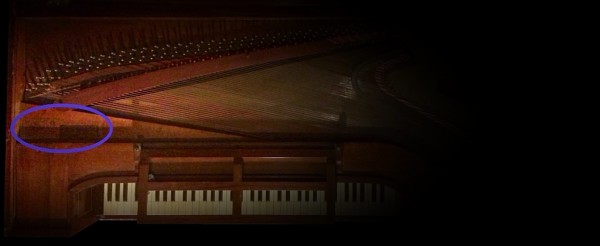
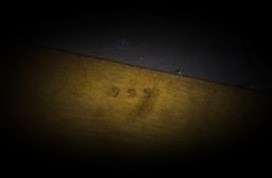
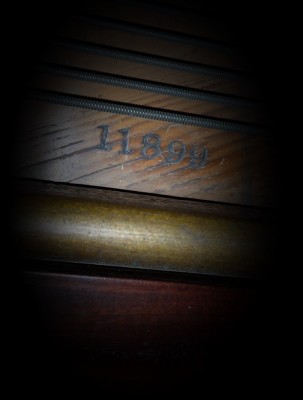
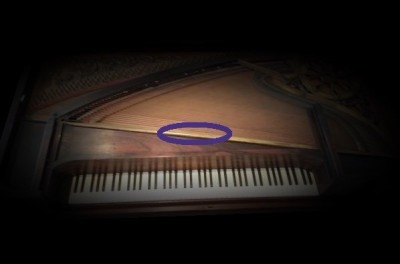
~1845 - ~1860
The serial number on this era of Chickering's squares will appear on the soundboard, but very close to the keyboard side, beneath and sometimes in front of the lowest string (these may be 4 or 5 digits, but look closely to ensure you see all of the numbers). These numbers are notoriously hidden under dust and dirt.
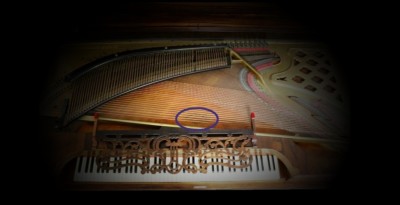
~1860 - ~1890
By around 1860, Chickering began to apply a stenciled logo in the center of the soundboard (visible beneath the strings) for its squares. The serial number (5 digits, by this period) should be in the center of this logo. These are generally quite obvious. It is not unusual, however, for these serial numbers to have been removed, for example, if the soundboard was refinished. If you cannot locate the serial number here, but you locate a 4- or 3-digit number elsewhere on a piano of this era (typically hidden from view), this is the case number, not the serial number. It cannot be used to date the piano.
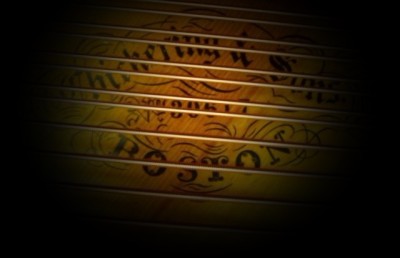
GRANDS
On its grand pianos, Chickering applied serial numbers in a number of different locations. With only the broadest exceptions, there is no rule where to look based on the general age.
As with later squares, many grands (from nearly all generations) have a logo at the center of the soundboard (visible beneath the strings). The serial number is ofen inside this logo.
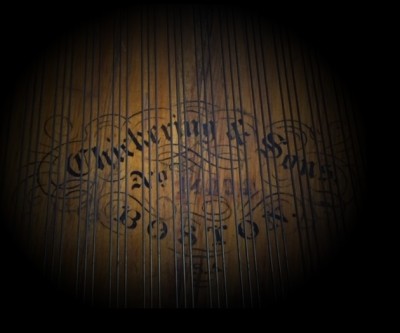
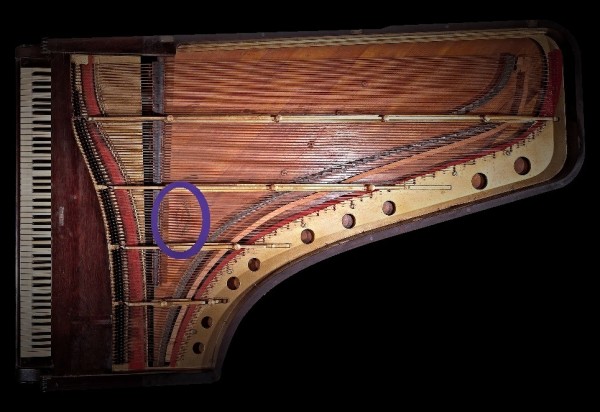
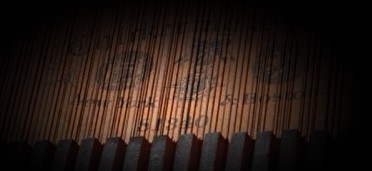
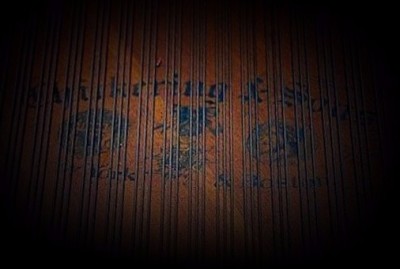
On some later grands, however, the center of the logo has additional material inside it, as seen in the first image; in such cases the serial number may be beneath the logo, as seen in the second image , or in an alternate location.
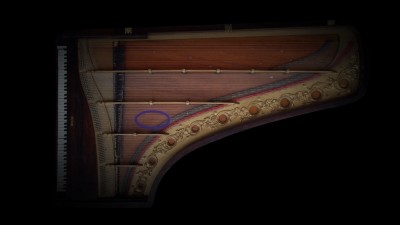
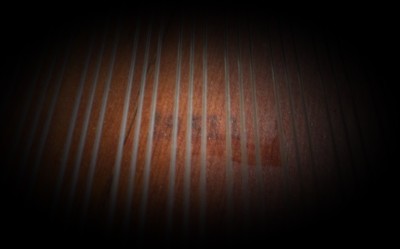
Less frequently, and typically only on pianos from before ~1860, the serial number will be stamped on the soundboard, somewhat inconspicuously and without any surrounding adornment. Sometimes it appears perpendicular to the strings, and sometimes parallel.
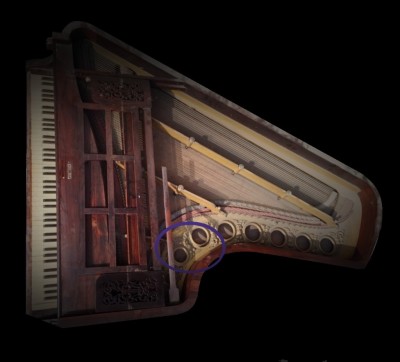
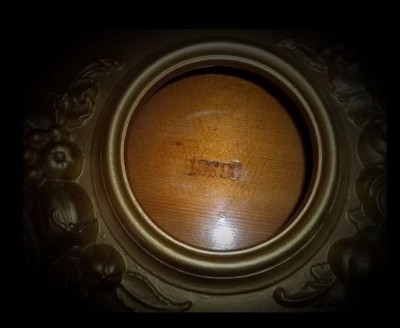
On cocked hat grands, the serial number may be stamped on the soundboard, but off to the side, and visible only through one of the holes in the iron frame.
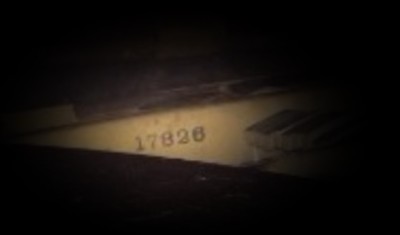
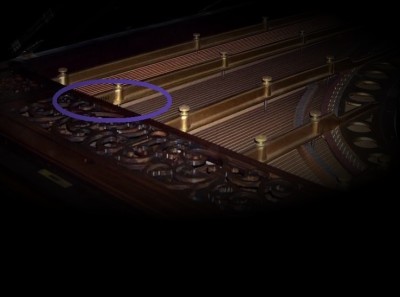
A common location for the serial number of Chickering's grand pianos of all generations is the vertical surface of one of the struts, roughly between the dampers and tuning pins. Most commonly it is a strut at the left side of the piano.
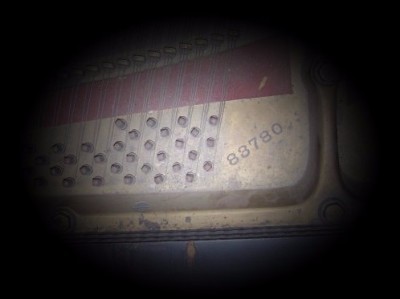
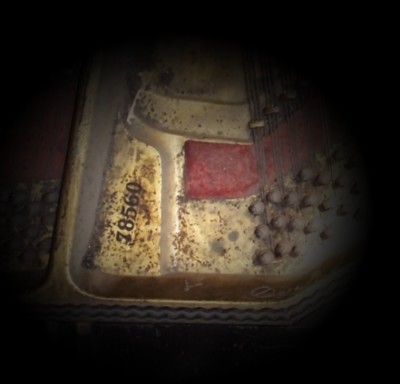
A final location, and this typically only on pianos after the mid-1880s, is on the iron frame near the tuning pins (usually the bass or tenor pins). The music desk may have to be removed to find the serial number in such locations.
Note that virtually all serial numbers for Chickering grand pianos should be 5- or 6-digits; those with 4-digit serial numbers are only infrequently encountered. If you do not locate your serial number in one of the locations just described and you find a 3- or 4-digit number elsewhere, this is almost certainly the case number, and cannot be used for dating the piano.